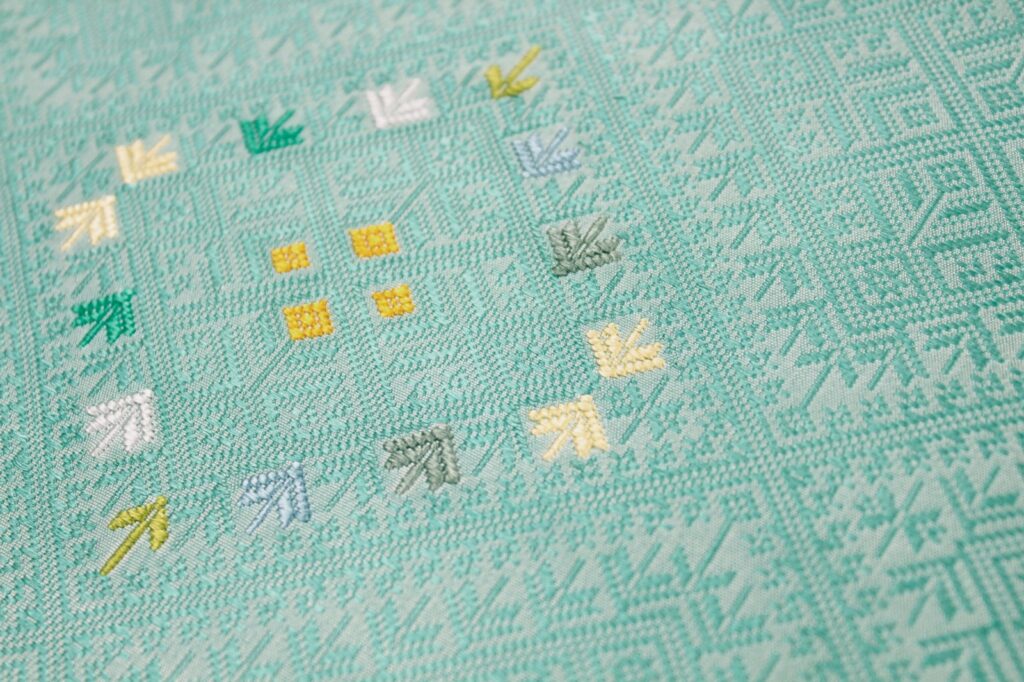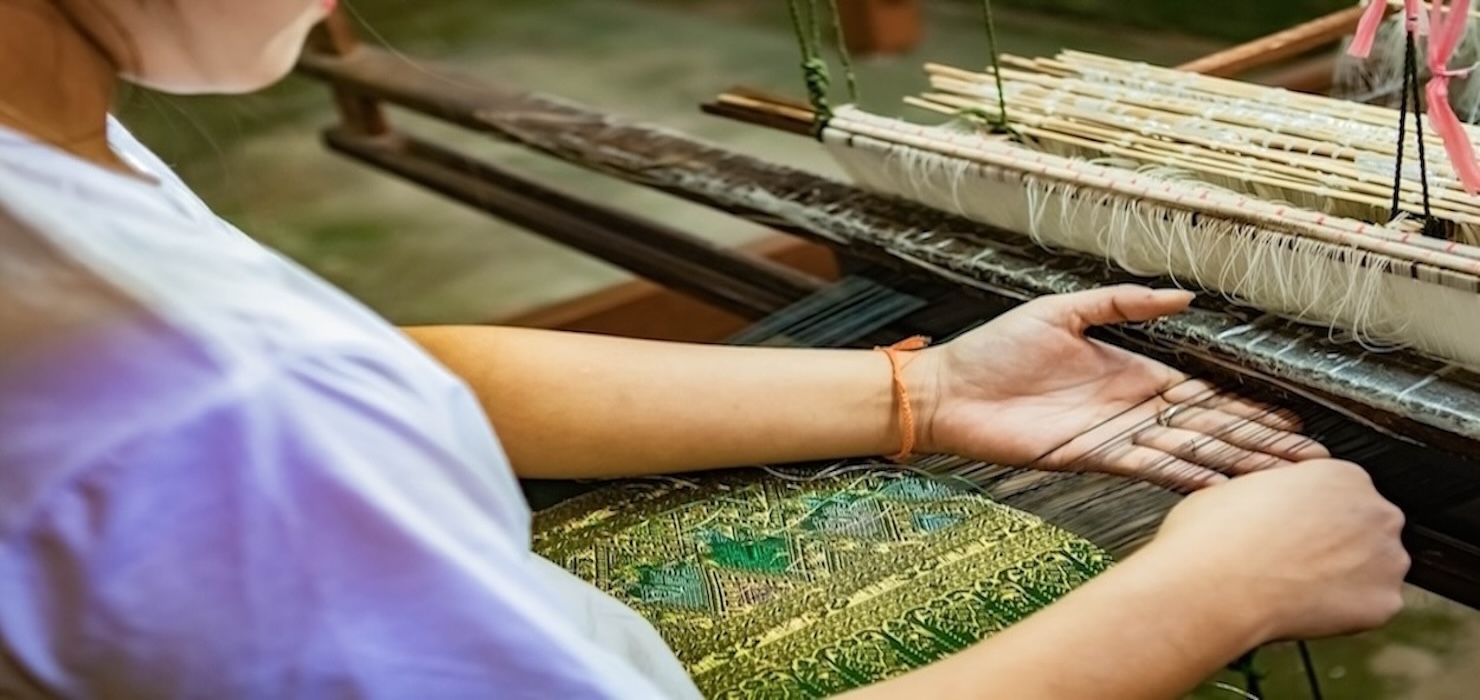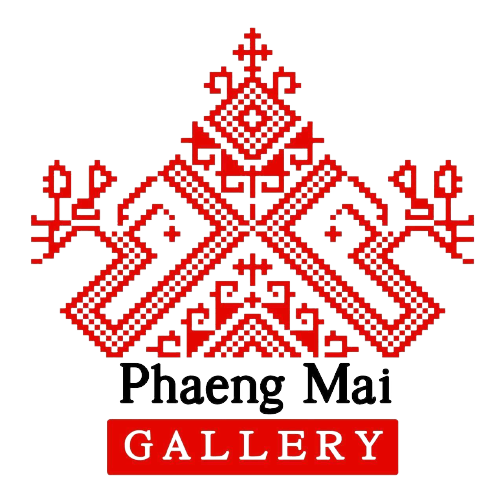In Laos, you will see exclusive collections of silk fabrics. These are made by using naturally dyed silk and are meticulously handwoven on traditional Lao-looms
In the past, many colorful textile fabrics were carried by the Silk Road Traders centuries ago
Women have woven their lives, hopes and aspirations into textiles. To weave powerful motifs on to a cloth is a reflection of the weaver’s belief that these motifs will do more than merely decorate the cloth.
Fabrizio Petralia, Fashion Designer
The Art of Lao Silk
Lao woven textile development has a long history, and the richness of the textiles always reflects its important role to embody the stories of the country and its people. A central task of the textiles is to serve the community as important objects for ritual ceremonies – and many designs were created with certain shapes and features to go with the peoples’ beliefs, Animist and Buddhist rituals all have textiles designed to narrate their worship. Another use for Lao textiles is to emphasize one’s own personality by wearing quality fabrics as artful crafted souvenirs.

History
Traditional weaving has been practiced in Lao families since centuries, thus leading Lao weavers to be among the best on international level. A skilled weaver is master and mentor of following generations and a mother will always pass on her knowledge to her daughter. Therefore, a wide range of heirloom textiles is at disposal to use as reference.
In Laos, you will see exclusive collections of silk fabrics. These are made by using naturally-dyed silk and are meticulously hand-woven on traditional Lao-looms. We develop exclusive in 3 main styles: Traditional, Contemporary and Fine Art.
Our products are made according to the highest standards of silk and cotton-weaving and incorporate authentic, original design patterns, as well as modern design, inspired by Lao textile weaving. We continued to grow and now accommodate over 100 highly-trained weavers, including 10 disabled young women.
Lao textiles are created from various types of silk threads. From one cocoon we gather 3-4 qualities of threads. The thread from the outer layer is chosen for the warp. The finer, second and third layers are ideal for the weft. Unique to Laos is the naturally yellow silk from a specific kind special cocoon which provides a natural look and soft texture. The more common white cocoon is used for its pastel color.
All quality inspections have been established under the guidance of the Japan Textile Products Quality and Technology Center (QTEC) and have to correspond to Japanese textile standards. Careful quality control on every stage of production ensures overall outstanding quality of our products. All our products have met with and subsequently passed stringent QTEC quality control inspections, thus guaranteeing international buyers and consumers of silk products, high quality, durability and utmost reliability.
Each course is adapted to foster weaving experience as well as creative design. Young women from rural areas are selected for their high motivation and commitment. After 5 years of training, these women are master Lao textile artists of tomorrow.
In Laos, we are one of first registered weaving companies to export silk textiles on the Web.


About The Founder
Kongthong Nanthavongdouangsy is Co-founder and Head of Technique and Materials Development for Phaeng Mai Gallery. She was born into a weaving family from Samneua, Houaphanh Province. She has a master’s degree in Linguistics from the University of Philology at Pyatigorsk, Former Soviet Union.
Kongthong sat at the loom and learnt how to weave when she was 8 years old. Now she is a master weaver of floor loom weaving, and a tutor of weaving for Lao and international students.
In 1992 her work won the UNESCO prize for an Outstanding Contribution to the Creativity in Traditional Textiles and in 2006 an award from the Seal of Excellence Asian Pacific Handicraft Development Association. In 2010, Kongthong was nominated by the Ministry of Information and Culture and Tourism as an outstanding artist for fine art. In 2013, she was nominated ASEAN Master Craftsmen on Textile (ASEAN Secretary Project), Malaysia. In 2014, Asian Living Human Treasurers, ASIA Cooperation Dialogue, Manila, Philippines. In 2015, she received ASEAN Craft Innovation, awarded from SACICT, Bangkok Thailand. In 2016, she was awarded with the Gold Medal by the Government of Lao PDR.
In addition to being involved in my family’s weaving studio, I have worked with many governmental organizations, both national and international. For example I have worked as National Expert on Handicraft and National Consultant and trainer for Sericulture for TDF project under National Implementation Unit (NIU), Ministry of Industry and Commerce. I worked as an international consultant for ITC/UNCTAD/ WTO in Thimphu, Bhutan as well as in Champasack, Laos. I worked for UNIDO for the handicrafts products in Oudomxay Province Laos. I worked as International Consultant for UNDP in Thimphu, Bhutan on weaving. I worked as National Consultant for DED/GTZ on Cotton handicraft in Sayabouli, Laos. I worked as International Consultant on Silk Design for DED/GTZ in Uboun Rachathani, Thailand.
